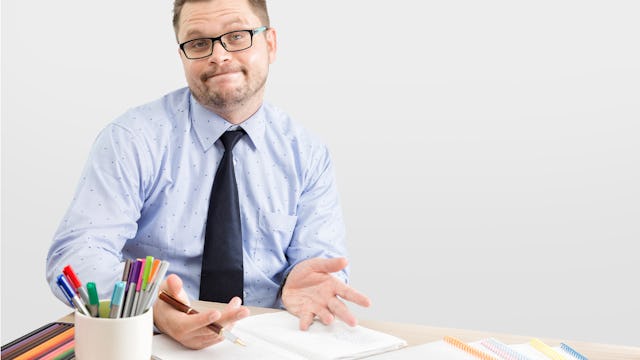Science Teachers Blame ‘Fake News’ For Students' Misinformation

In the era of fake news, teachers are having a hard time convincing students of facts
These days, were living in a time of “information overload,” which makes it difficult for people to see the difference between facts and fake news. When it comes to our kids, we count on teachers to help us learn the difference – but nowadays even they are having a hard time getting through.
When figures of authority–politicians, parents, celebrities, and even teachers–are questioning science and falling for fake news, everything is called into question. How do you convince someone of the truth?
A story on NPR explores the challenges teachers are facing in getting their students to accept facts in the face of conspiracy theories spouted by such eminent role models as NBA player Kyrie Irving.
Irving, who plays for the Cleveland Cavaliers, is one of many who inexplicably subscribe to the flat-earth theory, which one would have thought went the way of dodo years ago. But it’s rearing it’s head in schools, along with a variety of other misinformation. And teachers are struggling to combat it.
Ninth-grade science teacher Patrick Engleman told NPR he is constantly answering questions from students who found something on the internet. And Nick Gurol, who teaches middle-schoolers, says he’s forced to defend the idea of a round earth to his students, who believe an athlete over a science teacher.
“They think that I’m part of this larger conspiracy of being a round-Earther. That’s definitely hard for me because it feels like science isn’t real to them…How have I failed these kids so badly they think the Earth is flat just because a basketball player says it?””
NPR also cites a study out of Penn State that showed that even one-third of science teachers aren’t entirely convinced climate change is man-made. The study concluded that only about half of U.S. adults believe that climate change is the result of human activity, and that most U.S. science teachers have an insufficient grasp of climate science.
Take a scroll around social media and you’ll understand pretty quickly the uphill battle teachers are facing these days.
Fake news – actual fake news, peddled by disreputable websites and biased sources, is a real problem. False information has never had a more effective platform than it does right now with the internet and social media, and it has real ramifications. It changes minds, it can incite violence, it even influences elections.
Kids are savvy, especially when it comes to technology, but they’re also kids, and a lack of experience and knowledge makes them prone to believing things like the flat-earth theory and climate change falsehoods. Kids today consume so much information from various places, that being able to distinguish the real from the fake is more important than ever.
We count on teachers to beat back the tide of ignorance. But when role models like star athletes and, ahem, the President of the United States, use their platforms to peddle misinformation, it can be hard to compete.